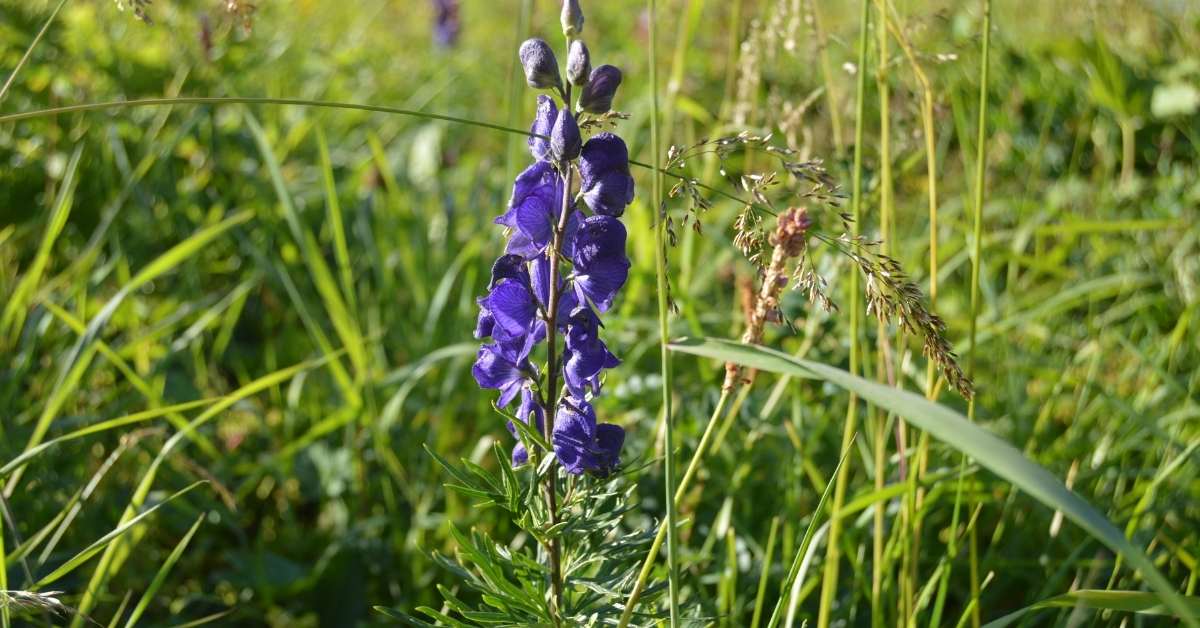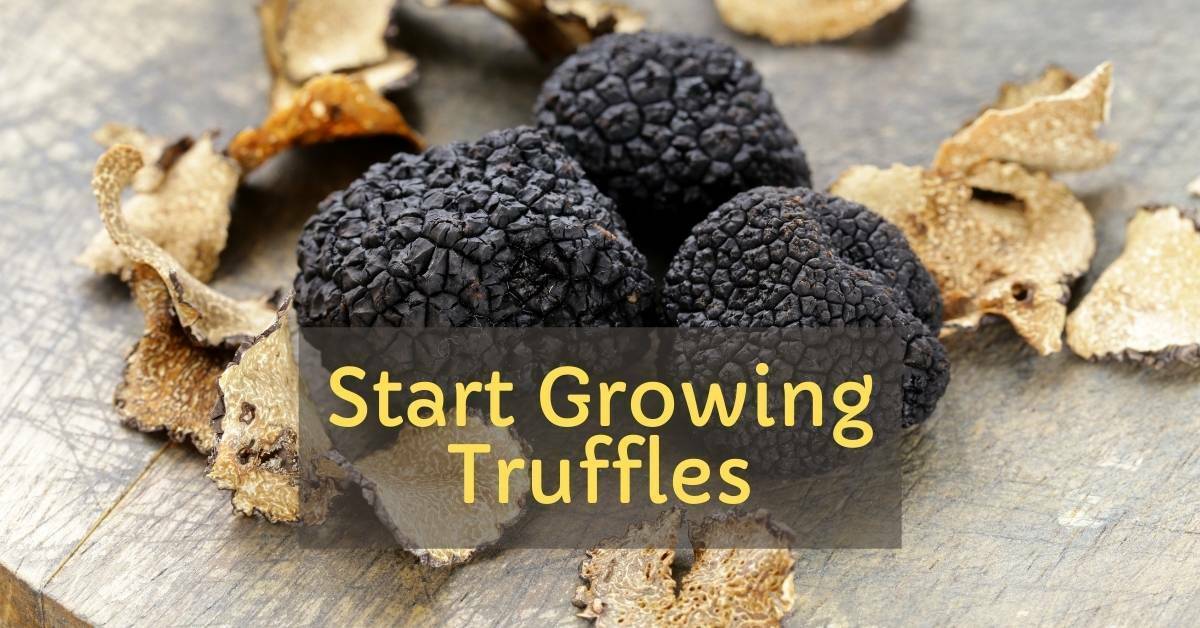Wolfbane or Monkshood is more properly known as (Aconitum Gapellus) and is a delightful and easily grown replacement for the tall spikes of delphinium. If you’ve ever seen this plant, you’ll know that the individual flowers resemble a monk’s hood, so this name is appropriate.
Here is the best guide for growing Monkshood in your garden.
How to Grow Monkshood, a Stunning and Poisonous Plant
Monkshood, also known as Aconitum or wolfbane, is a perennial plant that produces tall spikes of blue or purple flowers that resemble a monk’s hood. It is a striking and easy-to-grow plant that can add height and color to your garden. However, it is also one of the most poisonous plants in the world, and you need to be careful when handling or growing it.
Full sun or light shade. This plant will live in the shade, but the flowers get quite floppy with reduced sunlight. They perform best with a minimum of six hours of full sun every day.
I grow mine in rich soil with extra organic matter added; the organic matter ensures a consistent supply of moisture and nutrients that keep this plant sturdy and growing without stakes. I suspect if you overfeed it, you will have to stake it.
In nature, Monkshood is found as a woodland edger – getting protection from the blazing heat of the sun but allowed to get all morning and late afternoon sun it could gather. As a woodland edger, it would also receive the benefits of leaf litter – a constant and even soil moisture and temperature – to encourage it to bloom.
We have to emulate that condition in our gardens if we want to see this plant truly thrive. If you allow the garden soil to dry out, the performance of this plant will suffer. Being an “edger,” you may very well find that Monkshood will do well for your clay soil garden.
I’d suggest you add as much organic matter/leaf litter in the fall to emulate its natural environment, but try it if you have clay soils.
If you truly enjoy the blooms of Aconitum, then let me pass along this growing tip. As soon as the blooms are done on the first flowering flush, cut the bloom stalks to the ground and do not allow the plant to set seed. This will encourage it to set another round of flowers later in the summer.
The Ideal Conditions for Monkshood
Monkshood prefers a location with full sun or light shade, as too much shade can make the flowers flop over. It also likes rich soil with plenty of organic matter, such as compost or leaf litter, to retain moisture and nutrients. Monkshood needs consistent watering, especially during dry spells, but avoid overwatering or soggy soil. You can apply a balanced fertilizer in spring and summer to boost its growth and flowering.
Monkshood is hardy in USDA zones 3 to 8 and can tolerate cold winters and frost. However, it may need some protection from strong winds or heavy snow that can damage its stems. You can mulch the base of the plant with straw or leaves in late fall to protect the roots from freezing.

Blooming
Monkshood is a wonderful plant for adding color and height to your garden in early summer. It grows rapidly from the ground and produces tall spikes of hooded flowers in shades of blue, purple, pink, white, or yellow. It is one of the few plants that can bloom in partial shade and still look stunning.
Monkshood Problems: Pests and Diseases
Monkshood is generally resistant to pests, as most animals and insects avoid it due to its toxicity. However, it may occasionally suffer from some plant diseases that can affect its health and appearance. Here are some of the common problems that can affect Monkshood and how to prevent or treat them:
- Crown rot: This is a fungal disease that causes the plant crown to rot and die. It may occur in dense soils that are poorly draining or if garden debris traps moisture and fungi around the plant crown1. To prevent crown rot, make sure the soil is well-drained and amended with organic matter. Remove any dead or diseased plant parts and dispose of them safely. Avoid overwatering or splashing water on the plant crown.
- Powdery mildew: This is a fungal disease that causes a white or gray powdery coating on the leaves and stems. It may occur if the leaves remain wet a lot or if the air circulation is poor12. To prevent powdery mildew, water the plant from below or use a drip irrigation system. Prune any crowded or overlapping branches to improve air circulation. You can also spray the plant with a solution of baking soda and water or apply neem oil or other organic fungicides.
- Verticillium wilt: This is a soil-borne fungal disease that causes the leaves to wilt, yellow, and drop. It may occur if the soil is contaminated with the fungus or if the plant is stressed by drought, heat, or injury1. To prevent verticillium wilt, avoid planting Monkshood in areas where other susceptible plants have grown before. Keep the plant healthy and well-watered. Remove any infected plant parts and dispose of them safely. There is no cure for verticillium wilt, so you may need to replace the plant if it is severely affected.
The Best Varieties of Monkshood
The variety typically found in garden centers is Aconitum cammarum, and my favorite is Aconitum cammarum’ Bicolor’. It has a blue and white flower and is quite lovely.
This is the most common species of Monkshood, and it blooms in early summer with blue or white flowers. Some of the best cultivars are ‘Bicolor’, which has blue and white flowers; ‘Blue Sceptre’, which has mid-blue flowers; and ‘Bressingham Spire’, which has deep lavender-purple flowers.
‘Blue Sceptre’ with mid-blue flowers and ‘Bressingham Spire’ with a deep lavender purple flower are two other exceptional varieties.
Aconitum carmichaelii is a fall-blooming species that I enjoyed last summer at the Montreal Botanic Gardens; I enjoyed it so much that I obtained seeds and started my own. In January, the seed was sown in a cold frame, allowed to freeze and thaw naturally for several months, and I noticed that I have a few seedlings starting to germinate right now.
The seeds do require that cold stratification for successful germination.
Aconitum hyemale as a species is seldom grown, but the off-white form of this is sometimes found. Called ‘Ivorine,’ it too blossoms in early summer, and if you need a 48-inch tall white form, I would recommend this one.
Aconitum x hybrida ‘Pink Sensation’ is a new introduction with soft lavender-pink blossoms. Interesting and a good grower in my garden.
This is a hybrid between Aconitum napellus and Aconitum variegatum, and it has soft lavender-pink flowers that bloom in late summer or early fall2. It is also called pink sensation monkshood, and it grows up to 5 feet tall.
The Poisonous Nature of Monkshood
Monkshood is a highly toxic plant that contains aconitine, a potent alkaloid that affects the nervous system and the heart. All parts of the plant are poisonous, especially the roots and seeds, but even touching the leaves or flowers can cause skin irritation or numbness. If ingested, even a small amount can cause nausea, vomiting, diarrhea, dizziness, convulsions, cardiac arrest, and death.
Therefore, you need to be very careful when growing or handling Monkshood. Here are some precautions to take:
- Wear gloves and long sleeves when planting, pruning, or cutting Monkshood.
- Keep children and pets away from the plant, and do not let them touch or eat any part of it.
- Do not confuse Monkshood roots with edible roots, such as horseradish or parsnip. Label your plants clearly and store them separately from your food.
- Do not use Monkshood in herbal remedies or teas, as there is no safe dose for humans or animals.
- If you suspect that you or someone else has been exposed to Monkshood poisoning, seek medical attention immediately.
How to Enjoy Monkshood Safely
Despite its dangers, Monkshood is a stunning and rewarding plant that can enhance your garden with its elegant and colorful flowers. You can enjoy its beauty safely by following these tips:
- Plant Monkshood in a secluded area of your garden, away from paths or play areas where children or pets might wander.
- Use Monkshood as a cut flower in vases or bouquets, but keep them out of reach of children or pets. Change the water frequently and wash your hands after handling them.
- Appreciate Monkshood from a distance, and admire its shape and color without touching it.
- Learn more about Monkshood’s history and folklore, and discover how it has been used in medicine, magic, and mythology.
Conclusion
Monkshood is a fascinating and beautiful plant that can add a touch of drama and mystery to your garden. It is easy to grow and comes in many varieties, each with its own charm and character. However, it is also a deadly plant that can cause serious harm or death if ingested or touched. Therefore, you need to be very careful and responsible when growing or handling Monkshood and follow the safety tips we have provided. If you do so, you can enjoy this stunning and poisonous plant without any risk.
FAQ
How do I propagate Monkshood?
You can propagate Monkshood by dividing the roots in spring or fall or by sowing the seeds in a cold frame in winter or early spring. However, be sure to wear gloves and avoid contact with the roots or seeds, as they are highly toxic.
How do I prune Monkshood?
You can prune Monkshood by cutting back the flower stalks after they fade or by cutting them to the ground after the first flush of blooms to encourage a second flowering1. You can also remove any dead or damaged stems or leaves as needed. However, be sure to wear gloves and dispose of the cuttings safely, as they are highly toxic.
How do I control pests and diseases in Monkshood?
Monkshood is generally resistant to pests and diseases, as most animals and insects avoid it due to its toxicity. However, it may occasionally suffer from slugs, snails, aphids, powdery mildew, or rust. You can control these problems by using organic methods, such as hand-picking, spraying with water, or applying neem oil or baking soda. However, be sure to wear gloves and avoid contact with the plant or its sap, as they are highly toxic.

